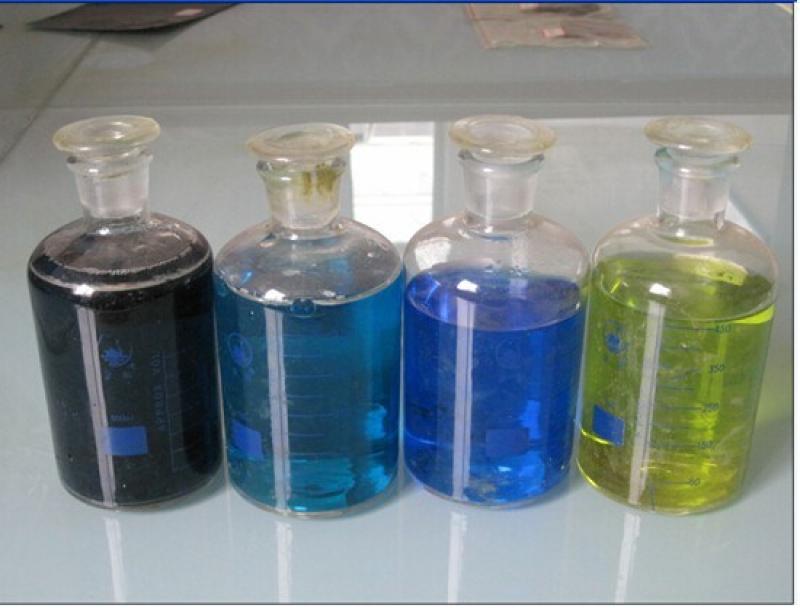Energy storage is becoming increasingly important as the world shifts towards renewable and clean energy sources like solar and wind. Lithium-ion batteries currently dominate the energy storage market due to their high energy density. However, researchers are exploring alternative battery chemistries that could provide better safety and lifecycle than lithium-ion. One such promising candidate is vanadium electrolyte which has the potential to revolutionize large-scale energy storage.
What is Vanadium Electrolyte?
Vanadium electrolyte refers to a class of redox flow batteries that uses vanadium ions in different oxidation states dissolved in an electrolyte to store chemical energy. When charged, the vanadium ions in the electrolyte can reversibly shift between two oxidation states - V2+ and V3+ or V4+ and V5+. This allows the battery to store and release energy through redox reactions.
Some key advantages of Vanadium Electrolytes over lithium-ion batteries include longer lifecycle, high safety due to non-flammable electrolyte, ability to independently scale power and energy capacity, and use of inexpensive and abundant vanadium metal. The most prevalent vanadium electrolyte chemistry today uses V2+/V3+ at the negative electrode and V4+/V5+ at the positive electrode with sulfuric acid as the electrolyte.
Applications for Large-Scale Energy Storage
Due to their flexible design, long lifetimes and ability to store large amounts of energy, vanadium electrolyte batteries are well-suited for stationary large-scale energy storage applications. Some potential applications include:
Grid-Scale Energy Storage: Vanadium redox flow batteries could help stabilise electricity grids by absorbing excess renewable energy production during periods of low demand and discharging it when demand exceeds supply. This helps overcome the intermittent nature of solar and wind power. Several pilot projects demonstrating multi-MW installations have been successfully deployed.
Residential and Commercial Energy Storage: Distributed storage using vanadium electrolyte batteries can help commercial and residential buildings better harness solar energy, provide backup power and reduce electricity costs by shifting load. Some vanadium battery manufacturers offer integrated storage systems scaled for homes and businesses.
Industrial Energy Management: Heavy industries requiring reliable, sustained power like data centers, mines and manufacturing plants can benefit from vanadium batteries to optimize electricity demand-supply and bring greater resilience to their operations.
Emergency Power: Vanadium batteries enable off-grid and stand-alone power systems for critical infrastructure during outages or in remote locations through their long discharge capabilities. The US Department of Energy is sponsoring projects using these batteries for emergency applications.
Technical Challenges and Research Focus
While vanadium flow batteries have shown great promise for stationary storage, some technical challenges still need to be addressed to improve performance and lower costs:
Lowering Costs: The relatively high cost of vanadium electrolyte and tank assemblies currently limits widespread commercial adoption. Research efforts aim to develop less expensive membrane separators and optimize designs to lower $/kWh.
Improving Energy Density: Higher energy density vanadium flow battery chemistries that utilize different oxidation states like V2+/V4+ with higher cell voltages are being investigated. Novel electrode materials and electrolytes can potentially boost Wh/L.
Longer Lifespan: Further improving the cycle-life of batteries through materials development, novel membrane technologies and protection additives could help reduce long-term costs through longer operational lifetimes.
Higher Efficiency: Reducing voltage losses during charge/discharge would allow vanadium batteries to retain more of their capacity per cycle through kinetic optimizations. This improves round-trip efficiency.
Improving Dynamics: Fast response times comparable to lithium-ion could open new application areas if activation overpotentials are reduced through electrode catalysts or flow field designs.
Commercial Developments and Outlook
Even as research works on addressing the technical barriers, vanadium flow battery manufacturers are aggressively scaling up production and deploying large systems. Market leader Vionx Energy recently commissioned a 20MW/80MWh system in Hokkaido, Japan - one of the largest flow batteries in operation. Others like redT Energy, Sumitomo Electric and CellCube are establishing manufacturing capacities measured in GWh/year.
Several independent analysts project the vanadium flow battery market to enjoy strong growth this decade on the back of increasing renewable integration worldwide. The global vanadium electrolyte battery market size is estimated to exceed $4 billion by 2030 according to some analysts. With government initiatives supporting energy storage, vanadium redox flow batteries seem poised to emerge as a reliable and durable solution for multi-hour bulk energy applications. Technology improvements could further accelerate their adoption across diverse sectors.
Get More Insights on Vanadium Electrolyte
